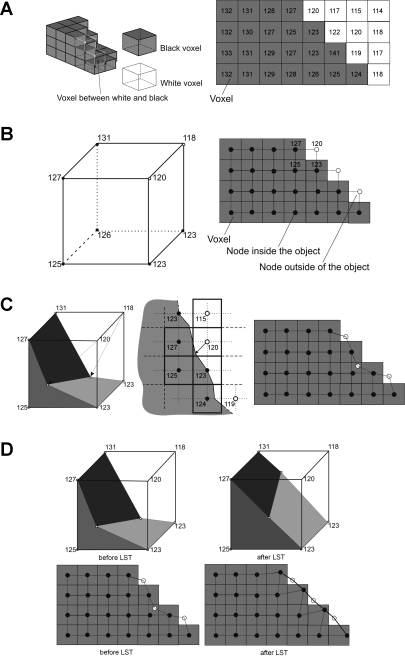Fig. 4.
Grid-based hexahedral algorithm A: 3D thresholded voxels (left) and 2D representation of thresholded voxels (right). The grayscale values are kept in the map of voxel. B: step 1: generation of uniform finite element (FE) mesh over the voxel map. For simplicity, FE nodes are positioned at the center of voxel. 3D FE meshing (left) and 2D FE meshing (right) are shown. Each node is assigned with the grayscale value from the corresponding voxel. C: step 2: moving nodes on the surface due to trilinear interpolation in 3D case (left) and bilinear interpolation in 2D case (right). The location of surface boundary is shown in the middle image for 2D case. A fast sub FE-voxel level algorithm is implemented to locate a surface boundary. White nodes are moving toward this surface boundary. D: step 3: Laplacian smoothing technique (LST). 3D and 2D before LST (left), 3D and 2D after LST (right).

